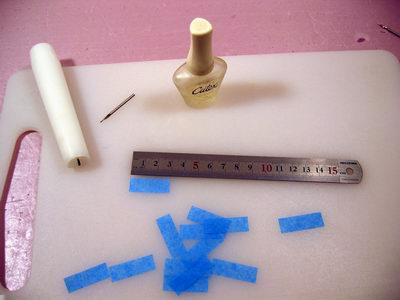 |
|
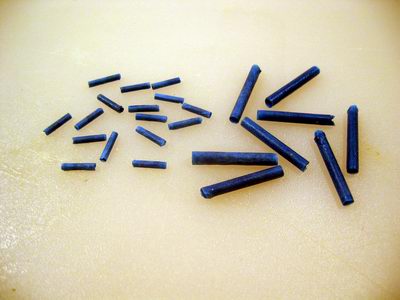 |
|
Tissue tubes are used to mount the wing on the fuselage (motor stick). Tissue tubes are made by rolling tissue paper on a round former (in this case a drill). The candle is used to rub the former with, to coat it with a thin layer of stearin, which prevents the tubes from getting stuck on the former. A nail polish bottle can be used to store diluted glue in, and has the bonus that it comes with a convenient brush.
|
|
The tissue piece is coated with glue, wound on the former, and then removed and left to dry. By using different sized formers, different sizes of tubes can be made.
|
| |
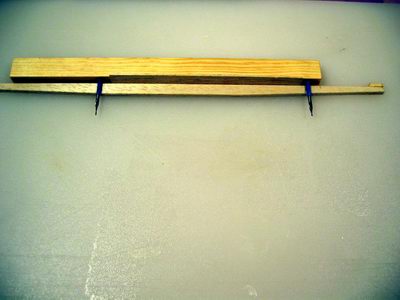 |
|
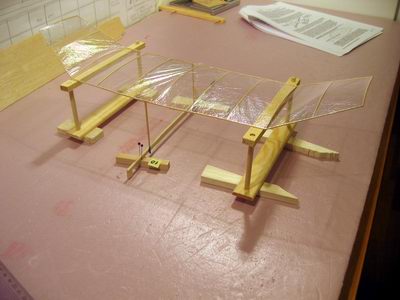 |
|
To get the wing mounting tubes correctly aligned, a simple jig was made.
|
|
Wing posts are made to fit in the tubes, and then glued to the wing. To get everything properly aligned, jigs are used to hold the wings and the motor stick.
|
| |
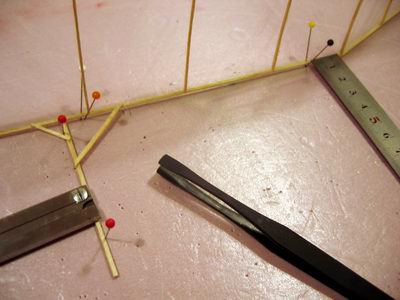 |
|
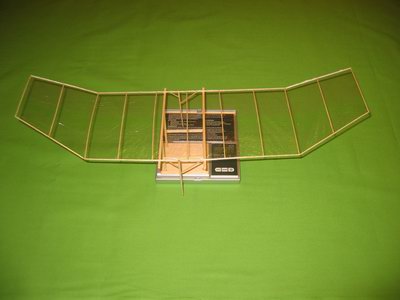 |
|
Some additional bracing for the wing posts
|
|
Here is the finished wing with wing posts. Weight: 0.73 gram
|
| |
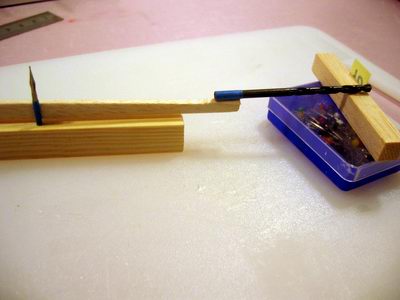 |
|
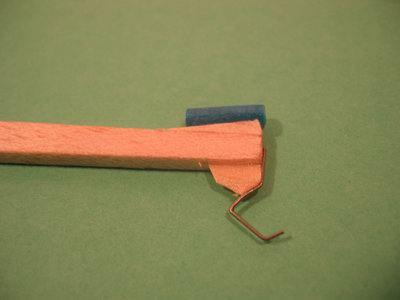 |
|
A deviation from the plan was the attachment of the tailboom to the motorstick using a tissue tube. This makes adjustments easier, and allows dismounting of the fuselage for easier transport. Here you can see the jigging used to glue the tube to the motorstick.
|
|
And here the rear hook is attached.
|
| |
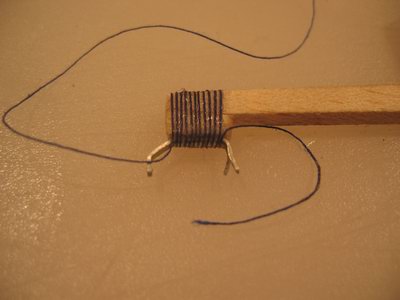 |
|
 |
|
The propeller holder is a ready made item. It is glued to the motorstick, and for extra strength the joint is wound with thread, which is then covered with glue.
|
|
Here is the completed motorstick. weight:0.80 gram
|
| |
 |
|
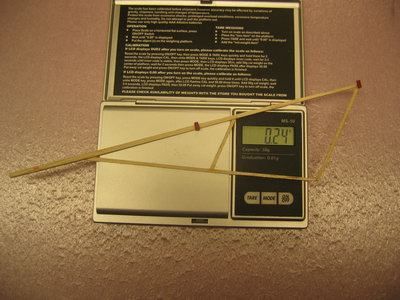 |
|
The "Novice Penny Plane" is a bit unusual in that the fin is built integral with the tailboom. Here is the fin/tailboom on the building board.
|
|
The tail frame. On the original plan, the stabilizer is glued directly to the tailboom, but as can be seen, Bo opted to use tube mounting here as well.
|
| |
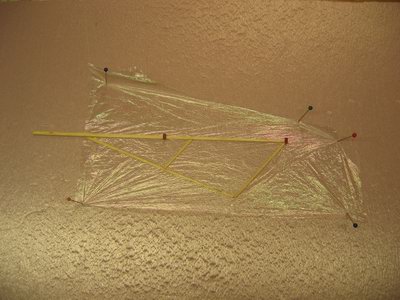 |
|
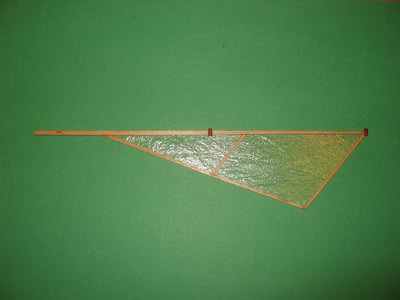 |
|
The fin being flat, is easily covered without the covering cradle used for the wing and stabilizer.
|
|
The tailboom/fin covered. Weight: 0.26 grams.
|
| |
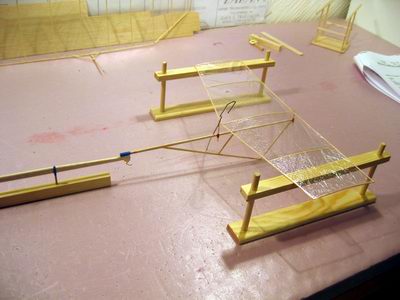 |
|
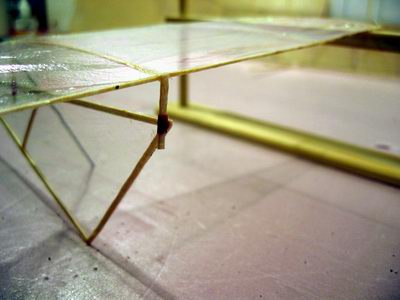 |
|
To set up the tailposts, a jig is again used.
|
|
Closeup on tail and tailpost.
|
| |
 |
|
 |
|
Stabilizer with tailposts. Note that the front post is not centrally mounted. This is to make the stabilizer sit perpendicular to the airflow in spite of the offset tailboom. In practice, it shouldn't make any difference to the aerodynamic efficiency.
|
|
The different pieces...
|
| |
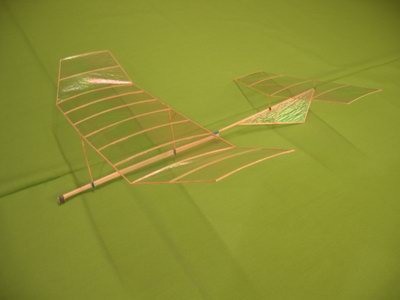 |
|
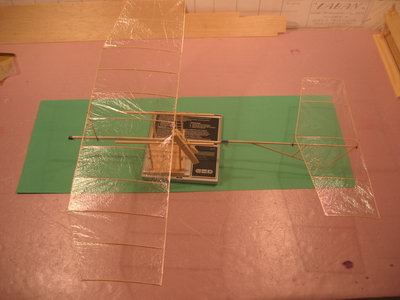 |
|
and everything mounted together.
|
|
On the scale. The weight is 1.98 grams
|
| |



















